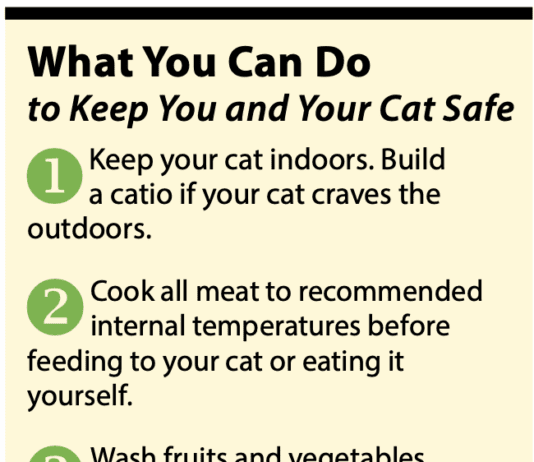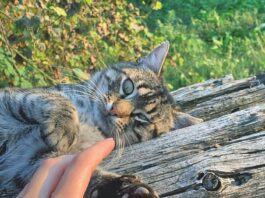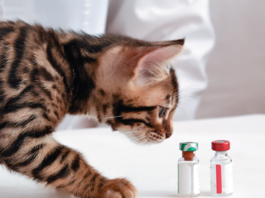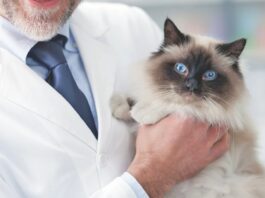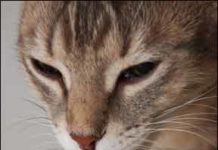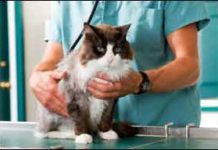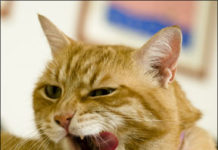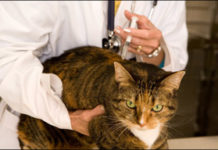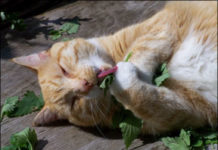Feline Blood Donors: Necessary
Blood can be the gift of life not just for us, but also for our cats. "A cat suffering severe injury or trauma may require blood transfusions," says Marjory Brooks, DVM, associate director of the coagulation section at Cornell Universitys Animal Health Diagnostic Laboratory. Other indications for transfusion include surgical complications and anemia caused by autoimmune disease, renal failure, chemotherapy, parasites in the intestinal tract or fleas. "Young kittens are especially at risk for blood-loss anemia caused by flea infestation," says Dr. Brooks. Cats that need plasma proteins to combat liver disease, clotting problems or rat poisoning may also require a transfusion.
Vomiting: When Is It Serious?
While youre watching your favorite television show in the family room, you hear a familiar retching sound from the kitchen. Boomer is vomiting up his dinner again. As you clean up the mess, you wonder if its just hair balls - or something more serious that requires a trip to the veterinarians office. Cats vomit for numerous reasons, ranging from benign dietary indiscretion to potentially fatal systemic diseases such as renal failure or hyperthyroidism. The experts say that cat owners should pay close attention to a cat that becomes sick to his or her stomach.
Why Theres a Decline in Veterinary Visits
Cat and dog veterinary visits have been declining over the past several years, and a new study might explain why. According to the Bayer Veterinary Care Usage Study, the reasons include: the economic impact of the recession, fragmentation of veterinary services, consumers substituting Internet research for office visits, cat resistance to vet visits, perception among pet owners that regular medical check-ups are unnecessary and the cost of care.
Short Takes: March 2011
Cornell University Veterinary Specialists (CUVS) welcomed its first patients in January, 2011. The satellite referral and 24-hour emergency care hospital located at 880 Canal Street in Stamford, CT, leverages the resources of the nations leading veterinary college, Cornell Universitys College of Veterinary Medicine, with those that the best of specialty private practice can offer for the benefit of pets, owners and the veterinary profession.
Short Takes: February 2011
Multiple endocrine glandular failure is recognized in humans, yet it is an uncommonly recognized phenomenon in veterinary medicine. This retrospective study ("Multiple endocrine diseases in cats: 15 cases [1997-2008]," Journal of Feline Medicine & Surgery, 2010) included a population of cats from a university veterinary teaching hospital diagnosed with multiple endocrine disorders.
Emergency Care for Your Cat
Perhaps the most important characteristic of a responsible cat owner is the ability to distinguish the signs of minor feline illnesses from those calling for an immediate trip to the nearest animal emergency care facility. Cat owners should be equipped ahead of time to deal promptly with such a crisis. They should know precisely where the clinic is located, the speediest route to get there, how to transport the afflicted animal, what documents they should take to the facility - and what to expect to happen upon arrival.
Short Takes: December 2010
Researchers developed a questionnaire for evaluation of cat owners perception of and knowledge about vaccination of cats, with owners asked to fill out a separate questionnaire for each cat they owned. A total of 3,163 questionnaires were evaluated ("Use of a web-based questionnaire to explore cat owners attitudes towards vaccination in cats," Veterinary Record, 2010). Vaccination as a kitten was the strongest predictor of up-to-date vaccination status, followed closely by plans to take the cat to a boarding cattery or cat show in the coming year. Owners who ranked the severity of infectious diseases or veterinary advice as very important were more likely to vaccinate their cats than owners who perceived these factors as less important.
Osteosarcoma: A Serious Diagnosis
Thanks to the numerous advances in veterinary medicine, many of the cancers to which cats are susceptible are now controllable, sometimes curable - and even preventable (in the case of mammary cancer, for example). This does not always hold true, however, for osteosarcoma, a highly destructive feline bone cancer for which there is no known cure unless it is detected early. Once osteosarcoma has invaded a cats body, the best that the animals owner can hope for is early diagnosis and management of the disease. If the cancer is confined to a limited area of an affected cats body, successful treatment will almost always involve surgical excision - the amputation of a leg, for example, or the removal of a part of the animals jawbone - in which case the cat may go on living for years.
Compounding Medications: Helpful
Some cats are simply perfect patients. They sit calmly for nail trims and they let you look inside their mouths and even brush their teeth, purring all the while. Other cats, however, are not so accommodating. You merely think about trimming their nails and they disappear in a flash. Getting a pill into them requires protective gear and strong determination. Most cat owners know that there are a lot of different ways of getting medications into cats, but the desperate owners of hard-core pill haters sometimes need to go the extra mile to find a solution.
Feline Respiratory Infections
Your best friends cat always seems to be ill. During your occasional visits to her home, the cat is often wheezing, sneezing and coughing. Her eyes are red and watery, and she acts lethargic. Your friend says that these signs tend to persist for a week or so - but then she seems to be all right again for a while. Its quite likely that the cat is suffering from a deeply rooted upper respiratory infection, a highly contagious disease affecting her nose, sinuses, pharynx and larynx - the structures that filter, heat and dehumidify inhaled air before it flows to her lungs.
Short Takes: July 2010
This study ("The influence of olfactory stimulation on the behaviour of cats housed in a rescue shelter" in Applied Animal Behavior Science, 2010) examined the impact of environmental enrichment in an animal shelter when "novel smells" (odors other than those normally encountered in the shelter environment) were introduced in the cats enclosure. The odor exposure was presented as odorless cloth, or cloths permeated with the odor of rabbit, catnip or lavender.
Critical Care for Your Cat
A virtually comatose cat was rushed by its distraught owners into the emergency unit of the Cornell University Hospital for Animals (CUHA). The animal, a neutered two-year-old male, hadnt eaten a bite of food or consumed a drop of water for the previous 24 hours. The night prior to his arrival at the hospital, the cat had spent nearly an hour straining in his litter box, apparently in considerable pain, but had neither urinated nor defecated. When his owners awoke the following morning to find the poor animal vomiting intermittently, they finally agreed that emergency care might be warranted. Lucky for them, not to mention the ailing cat, they moved into action. By the time they reached the hospital, the cat was breathing with great effort and lying motionless on his side. A team of veterinarians and licensed veterinary technicians immediately noticed that the animals bladder was grossly swollen. Clearly, it had a blockage in its lower urinary tract that prevented the passage of urine. The team went speedily to work, feeding fluids into the animal intravenously while relieving the obstruction in its urethra.

